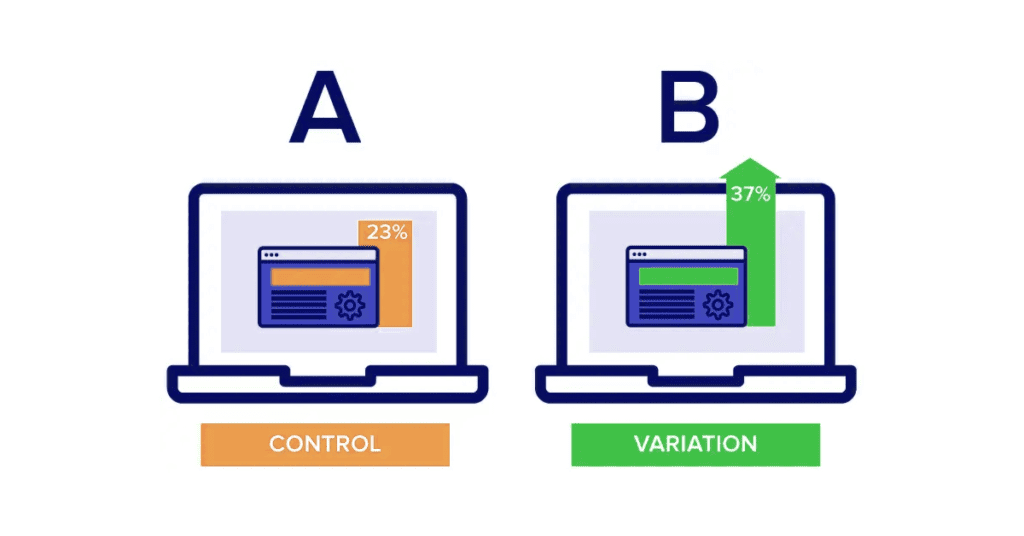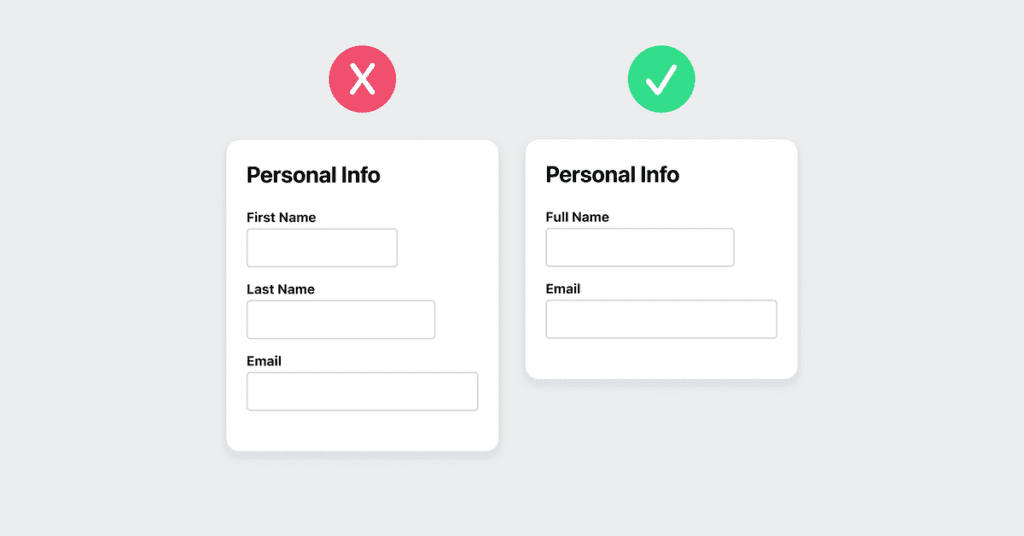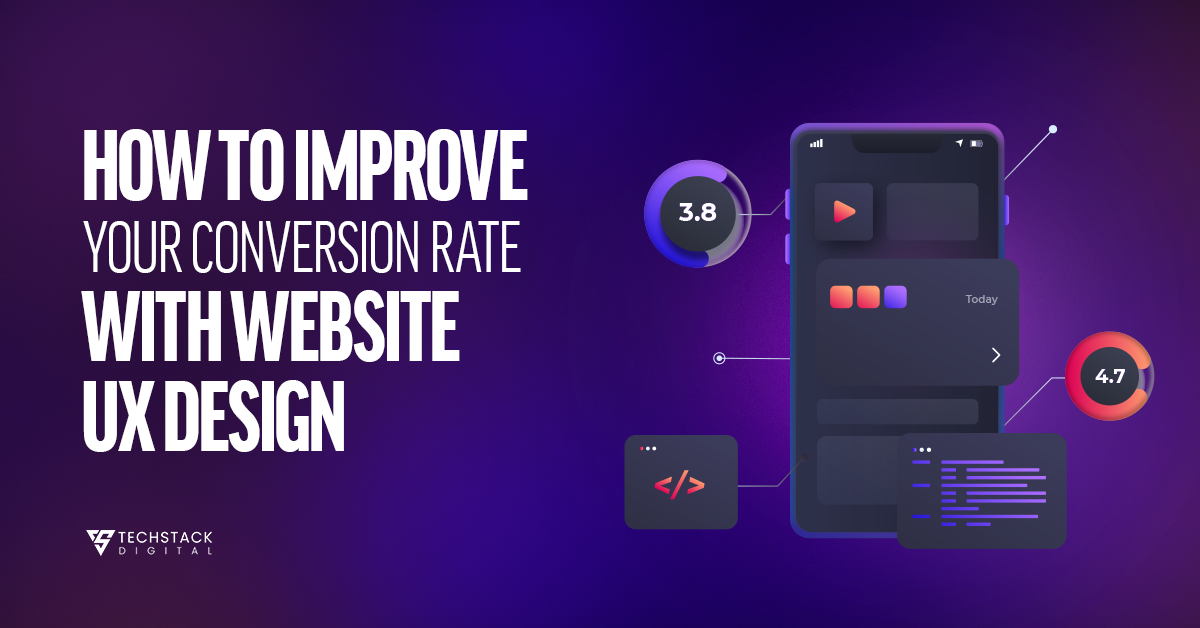Have you ever thought about why some sites seem to be popular and have a large flow of clients, whereas some sites are barely viewed? The final solution is usually a concept known as UX conversion optimisation. In layman’s terms, it is all about the optimization of your website from the performing point of view to enhance the desired website conversions and if you want to optimize your site then don’t look further as one of the best web design company Florida is at your service.
Think of it like this: you are your business, your website is the window to your business. Much like any ground store, your website requires a warm welcome, nice layouts that enable easy browsing and, of course, assistance. Starting from design layout, the loading speed, and proceeding to the checkout page, every aspect defines whether that person is going to stay on your website and, as a result, buy something.
In this guide, we’ll discuss real, tangible, and easy to implement tips to enhance your ux design for how to improve your website while boosting the conversion rate of a website too. Therefore, if you are up to the challenge of making your sites a conversion machine, then let’s go!
An Introspective View on Conversion Rate and the Relationship with UX Design
Let’s break it down: what does it really mean rate of conversion?
Essentially, your website conversion rate is the number of users who perform a specific action out of the total number of visitors. This could be anything from a purchase, subscribing to an organization’s newsletter or even providing their contact details on a contact us form.
If a hundred people go to your site and a single digit number of them buys your product or service, the conversion rate is 10%. Sounds straightforward, right?
Now, here comes the strategy called UX design.
Think of a situation when you enter a store to find products are hidden, most employees are unfriendly and the check out is a terrible ordeal. More than likely, you would stroll out empty handed.
The same issue is also applicable to websites. If your site is a mess, poorly designed, or moving at a turtle’s pace, people will leave without making the transition. Which is why UX conversion optimisation for an SEO friendly website is one of the most important parts of the process; it is the process of crafting an easy and pleasurable user experience that leads them towards the conversion gently.
Mistakes Businesses Make When it Comes to Conversion Optimization
Whenever a company concerns the conversion rate optimization (CRO), they may actually end up focusing on the wrong things or utilizing wrong website conversion strategies. One of the misinterpretations made is that CRO is a one-time thing, not knowing it is a continuous process.
Most organizations think that after some modification, their job is done. Nevertheless, CRO can only be efficient when it is done on a constant basis and as a continuous process with the results always under analysis and fine-tuning. It means that your strategies concerning UX conversion optimization have to be changed as well – along with the changes in users’ behaviors and the introduction of new technologies.
Secondly, interactive design of websites might be changed according to the company’s ideas of good interface instead of the one actually preferred by users. Based on a study conducted by Invesp, it was found that 59% of the firms have incorporated data-driven methodologies into CRO, which is critical for identifying measures that indeed enhance the overall site conversions.
One of the bigger issues which could be classified under the umbrella of ‘subtle’ is the presence of weak or actually no clearly defined Call-to-Actions (CTAs).
The last but not the least, relevant and persuasive CTAs are also vital to lead users to the conversion. But it is common to observe that many sites have unclear or buried CTAs. A study done by Small Biz Trends revealed that only 30% of the small businesses have got homepage call to action buttons. Overcoming CTAs is one of the most vital ux design hacks that any given site can undertake to boost conversions.
Furthermore, while designing, specific aspects of users are often ignored or not considered end to end. They could also focus on tweaking individual Web pages without considering the picture to be seen by the user. The goal of a website conversion strategy is the coherent effective process that a user goes through while interacting with the website.
For businesses seeking cost-effective and high-quality CRO solutions, collaborating with an offshore software development company can be a strategic move. These companies bring expertise in data-driven design, user behavior analysis, and advanced UX optimization techniques, ensuring that websites are not only visually appealing but also optimized for conversions.
The final common mistake is dramatic underestimation of the opportunities for personalization and trust building in CRO. Customization can ensure that the websites have a high conversion rate from the visitor to the client. Based on Epsilon’s insight, clients tend to be more willing to purchase products when the brands produce customized experiences for them to an extent of 80%.
UX and its Elements:
When diving into the world of UX (User Experience), it’s essential to understand its core elements: usability, the appearance, interaction and structure, and content creation. All these form a great usability and ease in navigation of the website by the users that you can simply attain by understanding website navigation best practices. These elements are the hallmarks of a sound UX plan and can help drive the users’ satisfaction while shooting conversion rates.
In usability, you want your site to be easy to move through and understand.
visual design specifically targets the beauty of the site to attract the user’s attention.
Interaction design is all about making the process of interaction as smooth and as much fun as possible.
Information architecture utilizes strategic approaches in categorizing the content with heed on making it easy to access.
Content strategy therefore follows a direction aimed at making sure that the content created is relevant, has important value, and dependable.
Ways to Quickly Improve Website Conversion Rate:
Website conversions means applying the right UX design tactics that improve experience and the way towards conversion. These are considered to be the website conversion best practices worldwidely. Here are detailed UX tricks to increase website conversions:
1. Simplify Navigation
94 percent of users said that simple and clear navigation is the most critical factor of a website, according to Google. Utilize comprehensible and brief tabs and headings and avoid sections with many distinct meals. Be structured in a logical manner and make sure all the information is, at most, three clicks away from the user.
Key Tips:
- A clean and sincerely arranged menu should be used.
- That is, minimize the variety of items to be offered on the food list.
- Another is to add a search bar to enable the permitted accessing of information easily.
2. Optimize Page Load Speed
As Akamai stated, 47% of the consumers expect web pages to load in three seconds or less, and a 1-second delay in load time can cut conversions by 7%. Optimize images, enable browser caching and employ use of content delivery networks or CDN. Then, using the Google PageSpeed Insights tool, one can find out what aspects one would need to optimize.
Key Tips:
- Compress images and videos
- Use browser caching
- Minimize HTTP requests
3. Improve Mobile Usability
Use the responsive design such that your website reflects the functionality of small and large screens. Make it easy for the end-users to navigate through a page especially on mobile devices and forms should equally be friendly for mobile users, check on buttons and links if they are big enough to touch. Statista stated smartphones and tablets access more than 50% of the world’s Web traffic.
Key Tips:
- Implement a responsive design
- Use large, readable fonts
- Display forms in a way that can easily be filled on a mobile device
4. Choose High Quality Images and Videos
Unpaid/low-quality images and videos are not good for the website and should be replaced by professional high-quality images and videos that depict the product. To attract the users more, make it a point to include videos that show how the product or service works. According to HubSpot, Graphics have the potential of raising the rate of conversion to as much as 86%.
5. Integrate Testimonials
According to a study done by Nielsen, 92% of the consumers trust referrals, the recommendation by other consumers even if they have no personal acquaintance with them. Implementation: To do this, you should use yellow tickets such as reviews and ratings, testimonials, case studies , and user-generated content in a very conspicuous manner on your site.
6. Implement A/B Testing

By using the A/B testing method, it is possible to achieve the maximum increment in the conversion rates which make up to 30% on average. Try out different headlines, images, the text, the CTA button, and the structure of the page consistently. For such tests, one can use such tools as Google Optimize and Optimizely to perform the tests and review the outcomes.
7. Enhance CTA Buttons
This small alteration of the color of the button can increase the conversion rates to an extent of 21%. Choose contrasting colors on your site and it is advisable to have clear and action-oriented text. Position CTAs in a way that they are noticeable and are read in areas where the click through rate is expected to be higher.
8. Reduce Form Fields

Minimize the number of questions that one asks about the client. Employ recommendations for faster and efficient operations in an effort to minimize boredom to its users. Because the fields are basic, more people complete the forms thus increasing the conversion rates. Source: Formstack.
9. Utilize Exit-Intent Popups
It seems that with exit-intent popups at least 10-15% of visitors who abandon the site can be retained. Explicit banner ads, pop-ups, or special offers within an application related to the website should be provided to users when they try to exit the site. Such tools can be used to implement these pop ups properly.
10. Countdowns & discounts
Consumers often rush to avail limited items as this can boost sales by as much as 332%. Countdown timers, low stock notices, phrases such as “Limited Time Offer” will push customers into making a fast decision. This can force a timid customer into making a purchase right away, they wouldn’t want to wait for the next coming days or weeks.
11. Security badges
Make sure visitors to your website can easily find security badges such as security seals, SSL certificates and privacy seals. Make sure your site is using https because the simplest way to make sure users are confident in putting their information into your site is to assure them that their data is safe. Out of the users, 61% of them have been put-off buying a product because it did not have a trust seal.
Conversion Rate Optimization (CRO) through UX design: The perfect blend between UX and goals
CRO and UX are two major factors that are important in ensuring the success of the digital business strategy. Together, they form a great complementary chain that not only improves the usability of the product but also improves the business’ goals, which would be getting more sales, signups, or any other measurable call to action.
This kind of balance is achieved when the principles of user-oriented design are complemented by business objectives to yield a highly effective and enjoyable visit.
Here are key strategies to achieve this balance, ensuring your website is optimized for conversions without compromising user satisfaction.
1. Understand Your Audience
Businesses that understand their target audience are 30% more likely to convert visitors. Use analytics tools like Google Analytics to gather data on user behavior. Conduct user surveys and interviews to understand their needs, preferences, and pain points.
2. Streamline User Journey
67% of users say a smooth user journey is critical for website conversion, Google reports. Map out the user journey from landing on your site to making a purchase. Identify and eliminate friction points to create a seamless path to conversion.
3. Optimize Content for Clarity and Relevance
Relevant content can increase conversion rates by 20%. Ensure your content is clear, concise, and directly addresses user needs. Use headings, bullet points, and images to make content easily scannable.
4. Implement Trust Signals
Display security badges, customer reviews, and testimonials prominently. Highlight any awards or certifications your business has received. 61% of users are more likely to convert on websites with visible trust signals.
Final Thoughts:
Conclusively, when paying attention to web design, specifically user experience design and implementing the above smart UX design hacks to improve website conversions, you are halfway to a better web experience. Do not forget this fact when it comes to increasing website conversion, because each small change matters.
To improve website conversion rate, firstly take care of your audience’s perspective. This means that there is a need to apply the tool of UX conversion optimization to help in the design of the site that is friendly, easy to use and engaging. Be it the visible call to action buttons or simpler, more effective navigation each component serves a specific purpose in increasing a website’s conversion rate.
Remember, how useful testing can be for your website conversion optimization and try out variations of your site and the features that your audience appreciates most; making your website conversion rates much higher. Try out different combinations of the website conversion best practices and do not be afraid to experiment with the strategy.
Last but not the least, it is clear that enhancing your website’s conversion rate is a process that always continues. Ensure that you are aware of current trends in UX conversion optimization and website maitenance cost. So that in case of future change, you are prepared. When considering these UX design hacks for enhancing website conversions, which primarily aim at enhancing the user experience, conversions are bound to rise for a given website and consequently, business operations.
